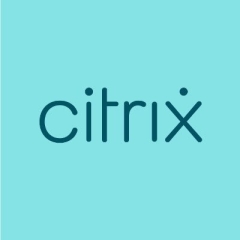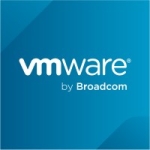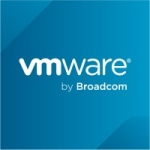What is our primary use case?
We offer our Citrix platform to all faculty, staff, and students at the university. We are a university on eight campuses throughout the state with about 130,000 potential users. We have the capability to offer any applications that we're licensed for and that fit well, being virtualized on that platform, to everybody. We offer it to everybody, but not everyone shows up.
We have special use cases where we're using the same physical infrastructure, but have carved up specialty virtual apps, desktops, and networks, for certain pockets of the university. We offer them to the School of Medicine, our Dentistry School, and to the university Online Program, where we have certain faculty that teach their courses exclusively online. We have to customize desktops for those particular fields of study, or for faculties that want to teach in via online learning.
In addition, for the School of Medicine and Dentistry, we do all of our clinical offerings. Anytime that we can virtualize a clinical offering and extend that beyond the brick and mortar part of the university, we do that. So that also applies to our Speech and Hearing Sciences. We train all of our future audiologists on the virtual platform. And it goes for Optometry.
We also offer assistance to our on-campus health center.
Another use case is that we offer the employees like me, people we call our "staff employees" of whom there are about 5,000, the ability to support their other IT infrastructure environments remotely. We have a special network that we've isolated for security purposes and streamlined for certain types of special research projects.
We also have a global network operations team because the university runs something called the Internet2. That's important. We give the folks who support Internet2 the tools, virtualized through our Citrix environment, so that they can work from home and support that in a secured manner.
We have Citrix Gateway but we don't have Single Sign-on. We have a lot of the Remote PCs, which has naturally been beneficial in dealing with the surge in usage due to COVID. We don't have Citrix Secure Browser deployed in production, but it is in test. We have Web/URL Filtering on the NetScaler. We also use the Web App Gateway and Citrix ADC. We deploy a two-factor authentication environment, on the security side. So we definitely force a second-level authentication. We have that integrated with a product called Duo.
It's deployed as a hybrid model. At the university, we have contracts with all of the big three cloud providers. It's our intention to be able to extend workload to all of them: AWS, Azure, and Google Cloud Platform.
How has it helped my organization?
The user experience when using the solution's technology remotely is definitely superior to our VPN and/or Windows Remote Desktop. It's a much better user experience for those folks.
The solution provides the flexibility of being used on any device. That allows the employees to be truly mobile in their remote work environments. They don't have to worry about running back to their physical homes to get on a laptop. They can use their phones if they need to. They can just be connected at all times.
The solution provides intelligent analytics for proactive detection of malicious user behavior. To some extent, we do have that on the Netscaler. We have analytics constantly collecting information and setting the alerts for deviations that we would see in our network traffic patterns. It has helped us to detect breaches before damage was done.
Once it's fully deployed, I believe the solution's automated analytics will help us to detect serious performance issues. We are not there yet.
The Citrix solution also provides everything in one integrated platform. We haven't found the need, yet, to go out and buy another product to help us in that space. There is still depth that we need to explore with the existing product line. In terms of the value this brings, while user experience is something that is quantitatively hard to express, certainly our university is touted for being very forward-thinking and for its advancements, compared to other universities. That's especially true in our particular state as it relates to the flexibility in offering our solutions remotely. I don't know anybody else that does that.
What is most valuable?
We certainly get more bang for the buck with the XenApp environment because we can really stretch that platform to many. It's a low cost when you look at the number of users that we get to access our Citrix XenApp-published desktop and individual applications. Citrix doesn't really even talk about XenApp anymore. They are marketing everything under the XenDesktop piece of the product line. Traditionally, XenApp was just anything that was a server-based OS, and Desktop was anything that was a desktop-based OS. We do both here at the University. We just have more workload on a server-based OS environment than we do on desktop OS. There are ebbs and flows. We used to not have very many virtualized desktop OS deployments, before COVID. We've had to do a whole lot more of that in the last few months. So for us, XenApp is number one, and Desktop is number two.
The other product that has really helped us quite a bit is that we have a Citrix NetScaler. They now call that ADC. That is our hardware appliance, the physical appliance that sits on the perimeter of our network. It acts as a firewall, router, and load balancer. That's where we can add the extra pieces of security. That's how we're able to use the same physical infrastructure to deliver virtual apps and desktops to everyone at the university and, at the same time, do more specialty, secure network offerings for our School of Medicine and researchers.
What needs improvement?
There is room for improvement on the hypervisor side, providing better integration between the hypervisor and the product line. I suspect that they haven't put the work into that because of the move to the cloud. They want everything to be cloud-hosted. But for folks like us, who will always be a hybrid model, that's of some concern.
For how long have I used the solution?
I've been using this Citrix solution since 2000.
What do I think about the stability of the solution?
We're very stable. We have a 98.9 percent uptime. We operate with just a little, rolling outage window that we'll use once a month for patching and the like. We're never, ever fully down, which is really crazy when you think about it.
What do I think about the scalability of the solution?
It scales very well, but it can be expensive. We've been able to scale the environment quite nicely by using the Citrix Remote PC. I can't say enough about that. And because that relies on utilizing your existing hardware resources, and making those available as a part of your Citrix farm — with a second level of authentication and security pieces around it — we added some 4,000 workstations without an additional overhead or cost. That has been key for us through the COVID pandemic.
In our environment we have about 20,000 people who use it regularly.
How are customer service and technical support?
Citrix technical support is average. It's not below average; it's not spectacular. If you stay with it, you can escalate your issues and eventually get to a design engineer, if you need to. We've had to do that and have been successful with it.
Which solution did I use previously and why did I switch?
I have supported Microsoft, using regular Windows Virtual Desktop and things like that. Those solutions can definitely serve some basic purposes, but when you want to do something more complex and you want to offer it for the whole enterprise, you want the extra bells and whistles and features that you get from the Citrix product.
How was the initial setup?
The initial setup is straightforward. Because I've been doing this for so long, I have been able to build on my prior knowledge. But the documentation that exists is, for the most part, well done. For some of the more complex pieces, they have, just lately, missed some key pieces that we've had to have escalated to higher engineers on the inside. But, when escalated and when we finally get the right team of people on the line, we've been able to progress and move through those issues.
I wasn't here for the initial deployment. Since I've been here, the rebuilds that we've been able to complete have been done in about six weeks.
In terms of our implementation strategy for the rebuilds, we knew that we needed to keep a hybrid model. We first looked at the options for design of that hybrid model. Most of my concerns centered around two-factor authentication and being able to keep that. That was something we weren't willing to let go or bargain with. It created a little bit of challenge for us because Citrix offers a form of two-factor authentication, their Duo product in the Citrix cloud, but that would be a different two-factor authentication. The last thing we wanted for our 130,000 students was to be confused about which Duo environment they were required to log in to. We needed all of ours to be on-prem and we worked with Citrix to design that strategy, so that everything would first filter through our on-prem points of authentication. That was key in strategizing how we would do our new build or deployment.
What was our ROI?
I believe we have seen ROI from using Citrix. It's been around at the university now for going on 12 years. That's a long time, at a university, to constantly keep shelling out dollars. But the ease of use and the flexibility that it offers to our entire university, and having the ability to do really forward-looking designs and offerings with special use cases around HIPAA in medicine and research, makes it well worth the money.
What other advice do I have?
You need to know your workloads very well. And that isn't something that you just know. So you should probably buy small, really small — smaller than you ever thought — and see what your workloads look like, and then grow into it. That's the key when it comes to sizing or implementations. Vendors generally want to come in and oversell you. They want to license you to the max for your number of projected users. That's really not necessary for a product like Citrix.
The biggest lesson I've learned from using the solution is to start small and find a small success story with the particular use case. Then let that success speak for itself. The way that my team operated is that we had the core service offering to all 130,000 faculty, staff, and students. And then we started slowly coming along and doing these customized service offerings within the university for specialty areas. Once a particular group sees a successful deployment or operation, it just spreads. Today, we have many more use cases that are waiting to be onboarded to our platform. I don't have to go soliciting for that. The work and the experience speak for themselves.
A lot of people who are just starting out with Citrix go straight to the cloud product. If it's your first introduction to the Citrix product family, that is the way to go. If you believe you have any use cases that will not likely move to the cloud — generally, those are some of your protected workflows — you can still give the product a try. Remember that the hybrid model is probably the most commonly used model that's out there today with this product family.
For a remote solution and connectivity I think it's the best that there is on the market compared to the other two, big, competing products. It's definitely superior so I would give it a nine out of 10.
Disclosure: PeerSpot contacted the reviewer to collect the review and to validate authenticity. The reviewer was referred by the vendor, but the review is not subject to editing or approval by the vendor.















